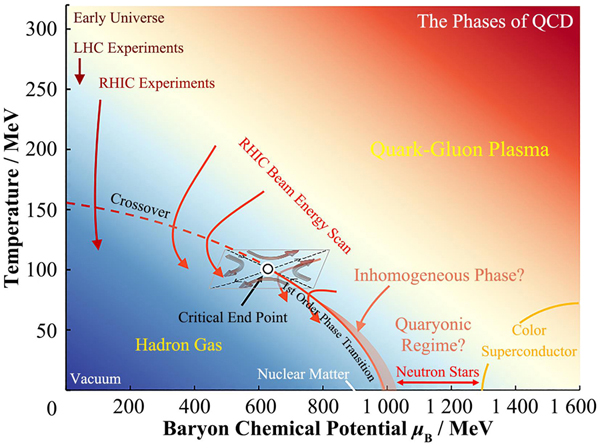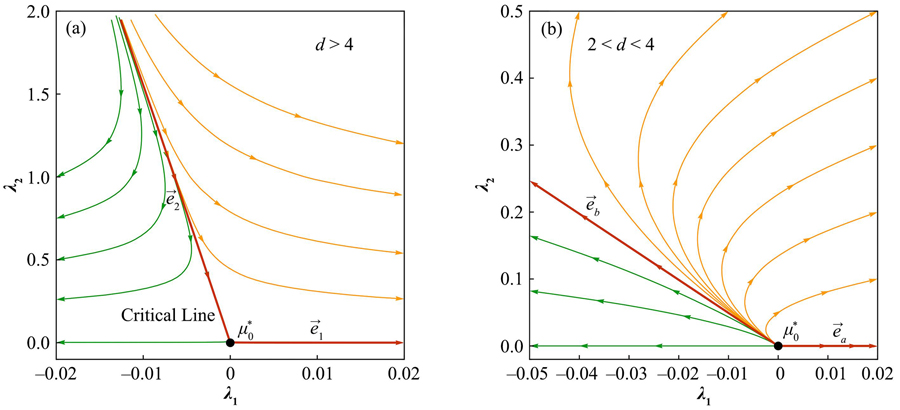Shi YIN, Yangyang TAN, Weijie FU. Critical phenomena and functional renormalization group[J]. NUCLEAR TECHNIQUES, 2023, 46(4): 040002
Search by keywords or author
- NUCLEAR TECHNIQUES
- Vol. 46, Issue 4, 040002 (2023)

Fig. 1. Schematic phase diagram of QCD

Fig. 2. Flow diagram of RG equations around the Gaussian fixed point in dimensions (a)
Fig. 3. (a) Flow diagram of RG equations around the W-F fixed point in
Fig. 4. Critical exponent
Fig. 5. 2D plot of the critical exponent
Fig. 6. Exact results of the critical exponent
Fig. 7.
Fig. 9. Chemical freeze-out temperature and baryon chemical potential in the
Fig. 11. Baryon number fluctuations

Set citation alerts for the article
Please enter your email address



